Home>Storage Ideas>Kitchen Storage>Modern Kitchen Ideas: 35 Contemporary Designs For A Kitchen


Kitchen Storage
Modern Kitchen Ideas: 35 Contemporary Designs For A Kitchen
Modified: August 30, 2024
Discover 35 modern kitchen ideas for a contemporary and stylish space. Transform your kitchen with innovative kitchen storage ideas.
(Many of the links in this article redirect to a specific reviewed product. Your purchase of these products through affiliate links helps to generate commission for Storables.com, at no extra cost. Learn more)
Introduction
Welcome to the world of modern kitchens! With the ever-evolving design trends, contemporary kitchens have become a hub of creativity and functionality. Gone are the days of traditional, cookie-cutter kitchen designs. Today, homeowners are seeking innovative and stylish ways to transform their kitchens into spaces that reflect their unique personality and lifestyle.
In this article, we will explore 35 modern kitchen ideas that will inspire you to create a stunning and functional space. From open concept layouts to minimalist designs, from industrial styles to Scandinavian-inspired aesthetics, we will dive into various kitchen designs that epitomize the spirit of modernity.
Whether you are planning a remodel or just looking for some design inspiration, this article will provide you with a plethora of ideas to revamp your kitchen and make it the heart of your home.
So, let’s embark on this exciting journey and discover the endless possibilities of modern kitchen design!
Key Takeaways:
- Embrace the endless possibilities of modern kitchen design, from open concept layouts to eco-friendly options, to create a stunning and functional space that reflects your unique personality and lifestyle.
- Incorporate thoughtful design concepts and personalized style to transform your kitchen into a place where functionality, beauty, and your unique vision intertwine to create the heart of your home.
Open Concept Kitchens
Open concept kitchens have gained immense popularity in recent years due to their spacious and airy feel. By removing walls that traditionally separate the kitchen from the dining or living area, open concept kitchens create a seamless flow between different parts of the house.
Advantages of open concept kitchens:
- Social interaction: Open concept kitchens encourage social interaction by allowing the cook to engage with family and friends while preparing meals. It creates a sense of togetherness and fosters a warm and inviting atmosphere.
- Enhanced natural light: With fewer walls, natural light can enter the kitchen from windows and other parts of the house, making the space feel brighter and more cheerful.
- Visual spaciousness: By eliminating walls, open concept kitchens create an illusion of larger space, which is particularly beneficial for small homes or apartments.
- Flexibility: Open layouts offer flexibility in terms of furniture arrangement and functional zones. You can easily incorporate an island or a breakfast bar to create a dining or workspace within the kitchen area.
Design tips for open concept kitchens:
- Seamless color palette: Choose a consistent color palette throughout the open concept area to create a cohesive and harmonious look. This will help tie the kitchen, dining, and living areas together.
- Strategic furniture placement: Position furniture such as sofas or dining tables in a way that defines the different functional zones within the open space. This will create a sense of purpose and organization.
- Utilize lighting: Use lighting fixtures strategically to delineate the kitchen area. Pendant lights or chandeliers above the kitchen island or dining table can help anchor the space and create a focal point.
- Consider sightlines: When choosing the layout for your open concept kitchen, consider the sightlines from different areas of the house. Aim for a design that allows for seamless views and connectivity.
- Create storage solutions: With an open kitchen, storage can be a challenge. Incorporate clever storage solutions such as hidden cabinets, built-in shelves, or a pantry to keep the space organized and clutter-free.
By embracing the concept of open kitchen design and implementing these tips, you can create a modern and inviting space that seamlessly integrates with the rest of your home.
Minimalistic Kitchen Designs
Minimalistic kitchen designs have gained popularity for their clean, streamlined aesthetic and clutter-free look. The key principles of minimalism include simplicity, functionality, and a focus on essential elements. If you’re drawn to a minimalist style, here are some characteristics to consider:
Characteristics of minimalist kitchens:
- Sleek and clean lines: Minimalistic designs favor straight lines and smooth surfaces. This creates a visually pleasing and uncluttered look.
- Neutral color palette: A minimalist kitchen typically features a neutral color palette, such as whites, grays, and beiges. This adds to the sense of cleanliness and simplicity.
- No-frills cabinets: Minimalist kitchens often feature handleless or sleek, minimalistic cabinet designs. These cabinets provide ample storage space while maintaining a streamlined appearance.
- Minimal decor: In minimalist kitchens, less is more. Keep decor to a minimum, focusing on essential elements like a few carefully selected pieces of artwork or plants to add a touch of personality.
- Open shelving: Open shelving can be an excellent choice for a minimalist kitchen, as it allows for displaying only necessary items and eliminates the need for excessive storage options.
- Functional layout: Minimalist kitchens prioritize functionality and practicality. Aim for a well-organized layout with designated areas for food preparation, cooking, and cleaning.
Incorporating sleek and simple elements:
- Choose minimalist appliances: Opt for appliances with a clean and sleek design. Look for appliances that blend seamlessly with the rest of the kitchen aesthetic.
- Use materials with a smooth finish: Select materials like stainless steel or glossy surfaces for countertops, backsplashes, and cabinets to maintain a sleek and minimalistic look.
- Focus on functionality: When selecting kitchen items and accessories, prioritize functionality over excessive ornamentation. Choose items that serve a purpose and fit the minimalist aesthetic.
- Declutter and organize: Regularly declutter your kitchen space to keep it clean and minimal. Utilize storage solutions like drawer dividers and labeled containers to keep everything in its place.
By embracing the minimalist design principles and incorporating sleek and simple elements, you can create a modern kitchen that is visually appealing, functional, and clutter-free.
Industrial Kitchen Style
The industrial kitchen style is a popular choice for those seeking a unique and edgy look. Inspired by the raw aesthetics of industrial warehouses and factories, this design style embraces unfinished surfaces, exposed brick walls, and a blend of modern and rustic elements. If you’re looking to create an industrial-style kitchen, here are some key elements to consider:
Elements of industrial design:
- Exposed structural elements: Industrial kitchens often highlight exposed structural elements, such as beams, pipes, and ductwork. These elements add a sense of authenticity and remind us of the building’s industrial history.
- Raw, unfinished surfaces: Emphasize raw and unfinished surfaces such as concrete or brick walls, concrete or metal countertops, and reclaimed wood flooring. These surfaces give the space a gritty and industrial charm.
- Metallic accents: Incorporate metallic elements, such as stainless steel appliances, brushed metal hardware, and industrial-style lighting fixtures. These accents add a polished and sleek touch to the overall design.
- Open shelving: Industrial kitchens often feature open shelving made of metal or reclaimed wood. These shelves provide functionality while displaying kitchen items that contribute to the industrial aesthetic.
- Utilitarian fixtures and fittings: Choose fixtures and fittings that have a utilitarian appeal, such as exposed industrial-style faucets, industrial-inspired range hoods, and open metal shelving brackets.
Utilizing raw, rugged materials:
- Concrete countertops: Opt for concrete countertops to achieve an industrial look. Concrete is durable, versatile, and provides a sleek and modern surface.
- Exposed brick walls: Consider leaving a section of brick wall exposed or using brick veneer to add texture and an industrial feel to the kitchen.
- Reclaimed wood accents: Incorporate reclaimed wood in the form of shelving, flooring, or even a kitchen island. This will add warmth and character to the space.
- Metallic finishes: Choose appliances, hardware, and fixtures with metallic finishes like brushed stainless steel or blackened metal to complement the industrial aesthetic.
- Industrial-style lighting: Install lighting fixtures with an industrial flair, such as pendant lights with metal shades or exposed bulbs. This will enhance the overall industrial vibe.
By incorporating these elements of industrial design and utilizing raw, rugged materials, you can create an industrial-style kitchen that exudes character, charm, and a sense of history.
Scandinavian-Inspired Kitchens
Scandinavian-inspired kitchens are known for their clean, minimalist, and cozy aesthetic. Inspired by the design principles and lifestyle of Scandinavian countries, this style focuses on simplicity, functionality, and natural elements. If you want to create a Scandinavian-inspired kitchen, here are some key aspects to consider:
Achieving a clean and cozy look:
- Simplicity in design: Keep the design clean and uncluttered. Scandinavian kitchens are known for their minimalism, with streamlined cabinets, simple lines, and a lack of ornate details.
- Neutral color palette: Embrace a neutral color palette with whites, grays, and earthy tones. This helps create a bright and open feel in the kitchen while allowing natural light to bounce off the surfaces.
- Wood elements: Incorporate natural wood elements, such as light-colored oak or pine, for flooring, cabinetry, or countertops. This adds warmth and a connection to nature, a key aspect of Scandinavian design.
- Cozy textiles: Add cozy textiles through linens, rugs, or window treatments. Opt for natural fabrics like cotton or wool in soft tones to create a warm and inviting atmosphere.
- Minimal window treatments: Allow as much natural light as possible by keeping window treatments minimal. Sheer curtains or blinds that can be easily pulled up or down are common choices.
Emphasizing natural light and neutral tones:
- Maximize natural light: Ensure that your kitchen has ample natural light by optimizing window placement and utilizing light-colored surfaces that reflect light. This enhances the airy and bright ambiance that defines Scandinavian design.
- Strategically placed artificial lighting: Supplement natural light with well-placed artificial lighting. Install multiple light sources, such as recessed lights, pendant lights, and under-cabinet lighting, to create a warm and well-lit space.
- Neutral-colored cabinetry: Choose light-colored or white cabinetry to maintain a bright and airy feel in the kitchen. This also allows other design elements, such as natural wood accents or decorative items, to stand out.
- Use of natural materials: Alongside wood, incorporate other natural materials like stone or concrete for countertops or backsplashes. This adds texture and a sense of organic beauty.
- Functional and efficient layout: Scandinavian design prioritizes functionality and efficiency. Ensure that your kitchen layout allows for easy movement and accessibility to different work zones, emphasizing clean lines and practicality.
By achieving a clean and cozy look and emphasizing natural light and neutral tones, your Scandinavian-inspired kitchen will exude a timeless charm and create a tranquil and inviting space for both cooking and socializing.
Farmhouse Kitchen Designs
Farmhouse kitchen designs evoke a sense of warmth, comfort, and nostalgia. Inspired by traditional country homes, farmhouse kitchens are characterized by their rustic charm and incorporation of traditional elements. If you desire a cozy and welcoming kitchen, here are some key aspects to consider for a farmhouse-style design:
Rustic charm and traditional elements:
- Wooden accents: Incorporate wood elements throughout the kitchen, such as exposed ceiling beams, hardwood flooring, or reclaimed wood accents. This adds warmth and a touch of rusticity.
- Traditional cabinetry: Opt for cabinetry with a classic and timeless design. Shaker-style cabinets, with their simple and clean lines, are a popular choice for farmhouse kitchens.
- Vintage-inspired fixtures: Choose fixtures with vintage-inspired designs, such as traditional faucets, farmhouse sinks, and antique-looking hardware. These elements add a charming and nostalgic touch to the space.
- Open shelving: Farmhouse kitchens often feature open shelving made of reclaimed wood or wrought iron brackets. This allows for a display of decorative crockery, vintage kitchenware, and other charming collectibles.
- Warm color palette: Opt for warm and earthy color schemes, such as creamy whites, soft yellows, or muted greens. These colors create a cozy and inviting atmosphere reminiscent of a farmhouse kitchen.
Incorporating farmhouse sinks and shiplap walls:
- Farmhouse sinks: A farmhouse sink, also known as an apron-front sink, is a signature feature of farmhouse kitchens. These deep and spacious sinks provide a practical and aesthetically pleasing focal point.
- Shiplap walls: Consider incorporating shiplap walls for a classic farmhouse look. Shiplap is a type of wooden board that has become synonymous with rustic and country-style interiors.
- Antique accents: Add antique accents and decorative items like vintage kitchen utensils, old framed prints, or rustic signage to infuse character and authenticity into the space.
- Farmhouse-style lighting: Choose lighting fixtures that reflect the farmhouse aesthetic, such as wrought iron pendant lights or vintage-inspired chandeliers. These light fixtures can add a touch of elegance and charm to the kitchen.
- Textured fabrics and patterns: Introduce textured fabrics through window treatments, seat cushions, or table linens. Consider incorporating farmhouse-inspired patterns like checks, plaids, or floral prints.
By embracing the rustic charm and traditional elements of farmhouse design and incorporating features like farmhouse sinks and shiplap walls, you can create an inviting and timeless farmhouse kitchen that exudes comfort and nostalgia.
Contemporary Kitchen Layouts
Contemporary kitchen layouts are all about embracing modern design principles and maximizing functionality and efficiency. These layouts prioritize clean lines, innovative features, and a seamless integration of technology. If you’re looking to create a contemporary kitchen, here are some key aspects to consider:
Incorporating unique and innovative features:
- Smart appliances: Embrace technology by integrating smart appliances into your kitchen. These appliances offer advanced features, such as Wi-Fi connectivity, voice control, and automation, to enhance convenience and efficiency.
- Multi-purpose islands: Opt for a kitchen island that serves multiple functions. Besides providing additional workspace, consider incorporating features like a built-in cooktop, a sink, or storage solutions to maximize the island’s utility.
- Unique storage solutions: Contemporary kitchens often feature innovative storage solutions to optimize space. Look for options like pull-out pantry racks, corner drawer units, or overhead storage systems that offer easy access and efficient organization.
- Statement-making backsplashes: Add a touch of personality to your kitchen with a bold and eye-catching backsplash. Consider materials like glass, metal, or patterned tiles to create a focal point and inject visual interest into the space.
Maximizing functionality and efficiency:
- Ergonomic design: Prioritize an ergonomic layout that minimizes unnecessary movement and strain. Ensure that the most frequently used areas, such as the sink, stove, and refrigerator, are within easy reach of each other.
- Ample countertop space: Contemporary kitchens require sufficient countertop space for food preparation, cooking, and other kitchen activities. Opt for materials like quartz or granite that are both durable and aesthetically pleasing.
- Efficient work triangle: Consider the work triangle concept, which connects the sink, cooktop, and refrigerator in an efficient layout. This triangular arrangement optimizes workflow and minimizes steps when moving between these areas.
- Integrated storage solutions: Implement integrated storage features to maintain a clutter-free and organized kitchen. Utilize drawer dividers, built-in spice racks, or appliance garages to ensure every item has a designated place.
- Task-specific lighting: Install task lighting in key areas of the kitchen, such as over the sink, stove, and food prep areas. This targeted lighting ensures a well-lit workspace and enhances visibility during specific tasks.
By incorporating unique and innovative features, as well as focusing on optimizing functionality and efficiency, you can create a contemporary kitchen that not only showcases modern design but also provides a practical and enjoyable cooking experience.
High-Tech Kitchen Gadgets and Appliances
In today’s digital age, high-tech kitchen gadgets and appliances have become increasingly popular as homeowners seek to embrace smart technology in their kitchens. These innovative devices and appliances are designed to enhance convenience, efficiency, and functionality in the kitchen. Here are some key aspects to consider when incorporating high-tech features into your kitchen:
Embracing smart technology in the kitchen:
- Connected appliances: Invest in smart appliances that can be controlled remotely through a smartphone or voice-activated assistant. These appliances allow you to preheat your oven, start your coffee maker, or adjust the temperature of your refrigerator from anywhere in your home.
- Voice-activated assistants: Incorporate virtual voice-activated assistants in your kitchen, such as Amazon Echo or Google Assistant. These devices can help you create shopping lists, set timers, find recipes, and provide hands-free control of other smart devices in your kitchen.
- Smart faucets: Upgrade your kitchen faucet to a smart faucet that offers touchless operation, water temperature control, and even voice-activated features. These faucets make tasks like washing dishes or filling pots easier and more hygienic.
- Smart refrigerators: Consider a smart refrigerator that can provide you with a digital inventory of its contents, suggest recipes based on available ingredients, and even send you expiration date reminders. Some models even have built-in cameras to help you check what you need while you’re at the grocery store.
Enhancing convenience and efficiency:
- Intelligent cooking devices: Incorporate high-tech cooking devices like smart ovens or induction cooktops with precise temperature control and preset cooking programs. These devices can take the guesswork out of cooking, ensuring perfect results every time.
- Efficient dishwasher: Upgrade to a technologically advanced dishwasher with features like sensor-based cleaning, adjustable racks, and energy-saving modes. These dishwashers can optimize water usage, reduce energy consumption, and deliver sparkling clean dishes.
- Smart storage solutions: Install smart storage systems that utilize sensors, motorized features, and app-controlled access to optimize space and provide easy organization. These systems can help streamline pantry management and minimize food waste.
- Smart lighting and temperature control: Incorporate smart lighting systems and thermostats to create an ambient and energy-efficient kitchen environment. Control the lighting intensity and color temperature, as well as adjust the temperature, all at your fingertips.
By embracing high-tech kitchen gadgets and appliances, you can transform your kitchen into a hub of efficiency and convenience. These innovative features not only enhance functionality but also simplify daily tasks, creating a more enjoyable and modern culinary experience.
Bold Color Schemes for Modern Kitchens
When it comes to modern kitchens, bold color schemes can add a vibrant and visually striking touch. Experimenting with vibrant and daring colors can bring a sense of energy, personality, and modernity to the kitchen space. If you’re looking to make a statement with colors in your kitchen, here are some considerations:
Experimenting with vibrant and daring colors:
- Accent wall: Create a focal point by painting one wall in a bold and vibrant color. This showcases your personal style and adds an element of drama to the kitchen.
- Cabinet color pop: Add excitement to your kitchen by painting your cabinets in a bold color. Choose a hue that complements the overall design and creates a stunning contrast with the surrounding elements.
- Colorful appliances: Consider incorporating colorful appliances, like a vibrant range or refrigerator, to make a bold statement. These eye-catching appliances can serve as the centerpiece of your kitchen design.
- Colorful backsplash: Add visual interest and character with a colorful and patterned backsplash. This can be achieved with vibrant tiles or even a colorful glass or metal panel.
Creating a visually striking kitchen design:
- Color blocking: Play with contrasting colors by incorporating color blocking techniques. This involves using different colors for different elements in the kitchen, such as cabinets, countertops, or kitchen islands.
- Two-tone cabinets: Create a modern and visually appealing look by using two-tone cabinets. Pair a bold color with a neutral shade to achieve a harmonious balance and create a striking visual impact.
- Statement lighting: Invest in bold and unique lighting fixtures that serve as eye-catching focal points. These fixtures can add a pop of color while providing functional lighting for your kitchen space.
- Colorful accessories: Incorporate vibrant and colorful accessories, such as bold utensils, colorful dishware, or decorative items, to add splashes of color throughout the kitchen.
When working with bold color schemes, it’s important to strike a balance and ensure that the colors complement each other and work cohesively with the overall design. Experimenting with vibrant and daring colors can breathe new life into your kitchen, creating a visually striking and energizing space that reflects your personal style and creates a memorable impact.
When designing a modern kitchen, consider incorporating sleek, minimalist cabinetry, high-quality materials like quartz or stainless steel, and integrated appliances for a clean and contemporary look.
Read more: How To Design A Contemporary Living Room
Clever Storage Solutions
In modern kitchens, clever storage solutions play a vital role in maximizing space and keeping the area organized. Utilizing space-saving and organizational techniques can help create a more efficient and functional kitchen. Here are some strategies to consider when designing storage areas:
Utilizing space-saving and organizational techniques:
- Pull-out pantry racks: Make use of slim pull-out racks or shelves within your pantry or cabinets. These convenient storage solutions allow easy access to items and maximize storage space.
- Vertical storage: Take advantage of vertical space by installing wall-mounted racks or shelving for storing pots, pans, and other kitchen necessities. This not only frees up countertop space but also adds a decorative element to your kitchen.
- Under-cabinet organizers: Install under-cabinet organizers, such as spice racks, knife holders, or hooks for hanging cups and mugs. These organizers utilize often neglected spaces and make items easily accessible.
- Drawer dividers: Use drawer dividers to keep utensils, cooking tools, and cutlery neatly separated and organized. This simplifies meal preparations and reduces clutter in your drawers.
- Corner storage: Utilize corner spaces effectively with rotating trays or pull-out shelves, making it easier to access items that would otherwise be hidden and hard to reach.
Designing efficient storage areas:
- Customized cabinet solutions: Customize your cabinet storage to suit your specific needs. Incorporate features such as adjustable shelves, deep drawers, or rollout trays to accommodate various items and optimize storage space.
- Pot and pan organizers: Install pot and pan organizers, such as racks or hooks, to keep these bulky items neatly stacked and easily accessible instead of cluttering up your cabinets.
- Overhead storage: Make use of overhead space by installing hanging racks or shelves to store items like cookware, baking sheets, or cutting boards. This frees up valuable countertop or cabinet space.
- Hidden storage: Incorporate hidden storage solutions, such as toe-kick drawers or built-in shelving behind a panel, to maximize storage without compromising the overall design and aesthetics of your kitchen.
- Utilize the pantry effectively: Optimize pantry space by installing adjustable shelves, clear canisters for dry goods, and dividers to keep pantry items organized and easily visible.
By using clever storage solutions and designing efficient storage areas, you can declutter your kitchen space, make it more functional, and streamline your cooking and meal preparation processes. Remember to take into consideration your specific needs and preferences when customizing your storage solutions to create a kitchen that is both practical and aesthetically pleasing.
Eco-Friendly Kitchen Designs
In today’s world, eco-friendly kitchen designs are gaining popularity as people become more conscious of their environmental impact. Incorporating sustainable materials and energy-efficient appliances and lighting options can help create a kitchen that is not only stylish and functional but also environmentally friendly. Here are some key considerations for designing an eco-friendly kitchen:
Incorporating sustainable materials:
- Bamboo or reclaimed wood: Choose bamboo or reclaimed wood for flooring, countertops, or cabinets. These materials are renewable and have a lower environmental impact compared to traditional wood options.
- Recycled glass or composite materials: Consider using recycled glass or composite materials for countertops and backsplashes. These options minimize waste and reduce the demand for new resources.
- Low VOC paints: Opt for low volatile organic compound (VOC) paints to minimize indoor air pollution and promote better air quality in your kitchen space.
- Natural stone: If using stone materials, choose ones sourced responsibly from quarries that follow environmentally friendly practices. Look for stones like quartz or granite, which are durable and require minimal maintenance.
Energy-efficient appliances and lighting options:
- Energy Star-rated appliances: When selecting kitchen appliances, opt for ones with the Energy Star label. These appliances are designed to be more energy-efficient, helping you reduce electricity consumption and lower your carbon footprint.
- Induction cooktops: Consider using induction cooktops instead of traditional gas or electric stoves. Induction cooktops are more energy-efficient, heating up quickly and providing precise temperature control.
- LED lighting: Replace traditional incandescent bulbs with energy-efficient LED lights. LED lights use significantly less energy, have a longer lifespan, and produce less heat, making them a sustainable lighting option for your kitchen.
- Natural lighting: Maximize natural lighting in your kitchen by utilizing window treatments that allow ample light to enter. This reduces the need for artificial lighting during the day, saving energy and creating a pleasant ambiance.
- Smart thermostats: Install smart thermostats to better control your kitchen’s heating and cooling system. These devices can intelligently adjust the temperature based on your usage patterns, helping to reduce energy waste.
By incorporating sustainable materials and energy-efficient appliances and lighting options, you can create an eco-friendly kitchen that promotes a healthier environment and reduces your carbon footprint. Not only will you be contributing to a greener planet, but you will also enjoy long-term cost savings through reduced energy consumption.
Creative Kitchen Lighting Ideas
In a well-designed kitchen, lighting plays a crucial role in both enhancing the ambiance and improving functionality. Creative kitchen lighting ideas go beyond basic lighting to create a unique and inviting space. By experimenting with different lighting fixtures, you can transform your kitchen into a beautifully illuminated culinary haven. Here are some inspiring ideas to consider:
Enhancing ambiance and functionality with lighting:
- Pendant lights: Install pendant lights above the kitchen island or dining area to add a touch of elegance and create a focal point. Choose styles that complement the overall design of your kitchen and provide focused task lighting.
- Under-cabinet lighting: Illuminate your countertops and enhance visibility with under-cabinet lighting. LED strips or puck lights can be installed beneath the upper cabinets, casting a soft yet practical light on your workspace.
- Recessed lighting: Use recessed lights strategically to provide overall ambient lighting. By placing them evenly throughout the kitchen ceiling, you create a balanced illumination that helps eliminate shadows and dark corners.
- Toe-kick lighting: Add a dramatic effect and guide guests by incorporating subtle LED lighting along the bottom of your base cabinets. This creates a beautiful glow along the floor and adds depth to your kitchen design.
- Task lighting: Install focused task lighting above areas where you need clear visibility, such as the sink, stove, or food preparation zones. This ensures you have ample light for specific tasks while minimizing strain on your eyes.
Experimenting with different lighting fixtures:
- Chandeliers: Add a touch of grandeur and sophistication to your kitchen with a stunning chandelier. Whether modern or traditional in style, a chandelier can serve as a statement piece, illuminating the entire space in a captivating manner.
- Track lighting: Create versatility with adjustable track lighting to accentuate specific areas or highlight artwork in your kitchen. The flexibility of track lighting allows you to showcase different elements based on your preference and mood.
- Wall sconces: Incorporate wall sconces to add an element of elegance and provide localized lighting. These fixtures can be placed strategically on kitchen walls to brighten up dark corners or complement other lighting sources.
- Strip lighting: Utilize LED strip lighting to add drama and create an inviting atmosphere. Place them underneath cabinets, along shelving, or behind a glass backsplash to add a subtle glow and highlight architectural elements.
- Dimmer switches: Install dimmer switches to control the intensity of your kitchen lighting. This allows you to create different moods and adjust the brightness according to the time of day or the desired ambiance for different activities.
By considering creative kitchen lighting ideas and experimenting with different fixtures, you can elevate the overall look and feel of your kitchen. Not only does lighting enhance functionality and visibility, but it also adds depth, warmth, and a touch of personal style, transforming your kitchen into a welcoming and visually appealing space.
Open Shelving Concepts
Open shelving concepts have become increasingly popular in modern kitchens as they offer a stylish way to display kitchen items while adding a touch of functionality. Open shelves create an open and airy feel, and they provide an opportunity to showcase your favorite dishes, cookbooks, and unique decor pieces. Here’s how you can make the most of open shelving in your kitchen:
Stylishly displaying kitchen items:
- Strategic arrangement: Arrange your items on open shelves in an organized and visually pleasing manner. Group similar items together, vary heights and sizes, and incorporate decorative pieces to create an aesthetically appealing display.
- Showcasing dishes and glassware: Display your beautiful dishes and glassware, arranging them by color or size to create a visually striking effect. This not only adds a decorative element but also makes it convenient to access these items when needed.
- Highlighting cookbooks: Stack your favorite cookbooks on open shelves, vertically or horizontally, to showcase your culinary inspiration. This not only adds a personal touch but also allows for easy access when searching for new recipes.
- Using decorative canisters and jars: Invest in decorative canisters and jars to store dry goods like pasta, coffee, or spices. These stylish containers not only keep your ingredients fresh but also add a visually pleasing element to your open shelving.
Incorporating decorative and functional shelving:
- Floating shelves: Install floating shelves for a clean and minimalist look. These shelves give the illusion of floating against the wall and can be placed in any configuration to fit your kitchen layout.
- Industrial pipe shelving: Add a touch of rustic charm by incorporating industrial pipe shelving. These shelves provide both functionality and a unique decorative element, perfect for a modern farmhouse or industrial-style kitchen.
- Glass shelves: Install glass shelves to create an illusion of openness and lightness. Glass shelves blend seamlessly into any kitchen design and allow light to travel freely, making the space feel more spacious.
- Mixing open and closed storage: Combine open shelving with closed cabinets to create a balance between displaying decorative items and hiding away clutter. This allows you to have the best of both worlds – showcasing your favorite pieces while maintaining a clean and organized look.
- Customized shelving: Consider customizing your open shelving to fit your specific needs. Create shelves of different widths and heights to accommodate different kitchen items, such as plates, bowls, glassware, or even small kitchen appliances.
With open shelving concepts, you can transform your kitchen into a visually appealing space where functionality and style harmonize. By stylishly displaying kitchen items and incorporating decorative and functional shelves, you can create a unique and personalized focal point that adds both character and practicality to your kitchen.
Luxury Kitchen Designs
Luxury kitchen designs are all about creating a lavish and elegant space that exudes opulence and sophistication. Incorporating high-end materials, finishes, and design elements, you can transform your kitchen into a luxurious haven. Here are some key considerations for designing a luxury kitchen:
Incorporating high-end materials and finishes:
- Marble or granite countertops: Opt for high-quality marble or granite countertops to add a touch of luxury and elegance to your kitchen. These materials are known for their durability, timeless appeal, and exquisite beauty.
- Custom cabinetry: Invest in custom-made cabinetry crafted from premium materials like solid wood or exotic veneers. Incorporate intricate details, such as decorative molding or hand-carved accents, to elevate the design to a luxurious level.
- High-end appliances: Choose top-of-the-line appliances from renowned brands that offer cutting-edge features, advanced technology, and sleek designs. This adds both functionality and a sense of luxury to your kitchen space.
- Elegant flooring: Consider luxurious flooring options such as natural stone, hardwood, or high-quality ceramic tiles. These materials not only create a sense of luxury but also provide durability and easy maintenance.
- Statement lighting fixtures: Incorporate grandiose and eye-catching lighting fixtures as focal points in your luxury kitchen. Chandeliers, pendant lights with crystal accents, or sleek and modern fixtures can add a touch of glamour and sophistication to the space.
Creating a luxurious and elegant space:
- Open layout: Design your kitchen with an open floor plan that seamlessly connects to other living areas. This fosters a sense of grandeur and allows for easy flow and socialization when entertaining guests.
- Kitchen island as a centerpiece: Create a stunning kitchen island that serves as a centerpiece. Incorporate high-end materials, exquisite details, and custom features like built-in wine racks or a waterfall countertop to make it stand out.
- Integrated wine storage: Include a dedicated wine storage area, such as a wine cellar or a temperature-controlled wine fridge. Displaying your wine collection in a stylish and organized manner adds a touch of elegance and sophistication.
- Luxurious seating areas: Create cozy and luxurious seating areas with comfortable chairs or stools upholstered in high-quality fabrics or leathers. Add decorative throw pillows and soft rugs to complete the luxurious ambiance.
- Finishing touches: Pay attention to the small details that elevate the overall design, such as elegant hardware, decorative moldings, or unique architectural elements. These finishing touches add a sense of luxury and refinement to your kitchen.
By incorporating high-end materials, finishes, and design elements, you can create a luxurious and elegant kitchen that is sure to impress. From the choice of premium materials to the attention to detail, every aspect of the design should exude sophistication and create a lavish and timeless space.
Kitchen Islands and Breakfast Bars
Kitchen islands and breakfast bars have become essential elements in modern kitchen designs. They offer not only additional counter space and storage but also serve as versatile and social areas within the kitchen. Here’s what you need to know about incorporating kitchen islands and breakfast bars:
Maximizing counter space and storage:
- Expansive countertops: Design your kitchen island or breakfast bar with ample countertop space to provide an area for meal preparation, baking, or serving. This extra workspace makes cooking more efficient and enjoyable.
- Built-in appliances: Integrate appliances such as a cooktop, sink, or wine fridge into your kitchen island or breakfast bar to maximize functionality and streamline workflow. This creates a centralized and convenient zone for cooking and cleanup.
- Storage solutions: Incorporate cabinets, drawers, or open shelves into your kitchen island or breakfast bar design. These storage options provide a convenient place to store utensils, cookware, or pantry items, keeping them within easy reach.
- Extended overhang: Extend the countertop of your kitchen island or breakfast bar to create a comfortable seating area. This overhang provides space for bar stools or seating, allowing for casual dining or socializing while keeping the cook engaged with family and friends.
Creating versatile and social kitchen areas:
- Multi-functional design: Design your kitchen island or breakfast bar to serve multiple purposes. It can function as a food preparation area, a casual dining space, or even a home office with built-in charging stations and storage for laptops or devices.
- Open shelving or display areas: Incorporate open shelving or display areas on your kitchen island or breakfast bar to showcase cookbooks, decorative items, or your favorite kitchenware. This adds a personalized touch and creates a focal point within the kitchen.
- Seating configuration: Choose a seating configuration for your kitchen island or breakfast bar that encourages socialization and conversation. Consider using backless stools or a combination of counter-height and bar-height seating to cater to different preferences and needs.
- Lighting and ambiance: Install pendant lights or decorative lighting fixtures above your kitchen island or breakfast bar to create a captivating ambiance. Adjustable lighting options allow you to set the mood for different occasions, from bright and functional to warm and intimate.
Kitchen islands and breakfast bars offer versatility, functionality, and a social hub in the kitchen. By maximizing counter space and storage, as well as creating a versatile and inviting space, you can enjoy the benefits of a multi-purpose area that brings family and friends together while adding style and efficiency to your kitchen.
Hybrid Kitchen Designs
Hybrid kitchen designs embrace the concept of combining different styles and elements to create a unique and personalized space. These designs break away from traditional norms and allow for a creative blend of aesthetics. Here’s what you need to know about incorporating hybrid elements into your kitchen:
Combining different styles and elements:
- Mixing materials: Experiment with a combination of materials such as wood, metal, glass, and concrete to create a visually interesting and eclectic look. This blending of materials adds depth and texture to your kitchen design.
- Contrasting colors: Contrast colors to highlight different elements in your kitchen. Combining bold and neutral colors or light and dark shades can create a visually striking effect and add a sense of drama to the space.
- Blend of traditional and modern: Combine traditional elements, such as classic cabinetry, with modern touches like sleek appliances or contemporary lighting fixtures. This fusion of styles adds a unique character and a timeless appeal to your kitchen design.
- Integration of rustic and industrial: Embrace the charm of rustic elements, like exposed brick walls or distressed wood accents, alongside industrial features such as metal fixtures or open shelving. The juxtaposition of these styles creates a warm and edgy ambiance.
Creating a unique and personalized kitchen:
- Customized layout: Design your kitchen layout based on your specific needs and preferences. Customize the arrangement of cabinets, appliances, and workspaces to create a kitchen that is tailored to your lifestyle.
- Personalized decorative accents: Incorporate personal touches that reflect your interests and tastes. Display artwork, family photographs, or unique collectibles to infuse your kitchen with a sense of personal style and sentimental value.
- Unique focal points: Create focal points in your kitchen by highlighting architectural features, such as a decorative hood or an eye-catching backsplash. These focal points become conversational pieces and add personality to your design.
- Statement fixtures and hardware: Install bold and distinctive fixtures and hardware to make a statement. Unique faucet designs, stylish drawer pulls, or standout light fixtures can add personality and elevate your kitchen’s visual appeal.
With hybrid kitchen designs, you can break away from conventional norms and create a kitchen that is uniquely yours. By combining different styles and elements that reflect your personal preferences, you can design a space that showcases your individuality and creates a truly personalized kitchen experience.
Retro Kitchen Designs
Retro kitchen designs embrace the charm and nostalgia of the past, bringing a sense of vintage flair into the modern era. These designs evoke a feeling of warmth and nostalgia, incorporating classic elements to create a unique and inviting space. Here’s what you need to know about incorporating retro elements into your kitchen:
Embracing nostalgic elements:
- Vibrant color palette: Choose a vibrant color palette that was popular during the retro era, such as pastel hues or bold, saturated colors. These colors add a playful and lively touch to your kitchen design.
- Vintage-inspired appliances: Incorporate vintage-style appliances that emulate the look of older models, but with modern functionality. Retro-style refrigerators, colorful range cookers, and classic-style toasters can instantly transport your kitchen back in time.
- Patterned flooring: Select patterned flooring to add a retro touch. Options like checkerboard tile or colorful linoleum can create a statement floor that complements the overall design of your retro kitchen.
- Classic prints and patterns: Incorporate classic prints and patterns in your kitchen design, such as gingham, polka dots, or bold geometric shapes. These patterns can be introduced through curtains, table linens, or decorative accessories.
Incorporating vintage appliances and decor:
- Vintage-inspired lighting: Install retro-style pendant lights or vintage-inspired fixtures to add a sense of authenticity to your kitchen design. These lighting elements can become focal points and enhance the overall retro ambiance.
- Display retro cookware and appliances: Showcase vintage cookware, like colorful enameled pots and pans or retro-style coffee makers, on open shelving or kitchen countertops. These elements not only add to the retro look but can also be functional for cooking and baking.
- Timeless countertops: Opt for countertops with a timeless appeal, such as butcher block or Formica, to enhance the retro aesthetic. These materials were commonly used during the retro era and can perfectly complement your vintage-inspired kitchen.
- 1950s diner-inspired seating: Add retro-style seating options, such as vinyl-upholstered bar stools or booth seating reminiscent of classic diners. This creates a cozy and nostalgic seating area that captures the essence of the retro era.
By incorporating retro elements into your kitchen design, you can create a charming and nostalgic space that takes you back in time. Whether it’s through vintage-inspired appliances, colorful accents, or classic patterns, embracing retro elements adds a unique personality and character to your kitchen design.
Read more: Sleek And Sophisticated: Modern Home Designs
Conclusion
Designing a modern kitchen is an opportunity to infuse creativity, functionality, and style into one of the most used spaces in your home. From open concept layouts to minimalist designs, from industrial aesthetics to Scandinavian-inspired charm, there are a plethora of kitchen ideas to explore and personalize. By incorporating these design concepts, you can transform your kitchen into a stunning and functional space that reflects your taste and lifestyle.
Open concept kitchens offer a seamless flow and promote social interaction, while minimalistic designs focus on simplicity and clean lines. Industrial kitchens embrace raw materials and rugged finishes, while Scandinavian-inspired designs prioritize natural light and neutral tones. Farmhouse kitchens create a cozy and traditional atmosphere with rustic elements and farmhouse sinks. Contemporary layouts incorporate unique features and emphasize functionality and efficiency. High-tech kitchen gadgets and appliances elevate convenience and efficiency with smart technology.
Bold color schemes infuse vibrancy and personality into modern kitchens, while clever storage solutions optimize space and organization. Eco-friendly designs prioritize sustainability, utilizing sustainable materials and energy-efficient options. Creative kitchen lighting ideas enhance ambiance and functionality, while open shelving concepts provide stylish display options. Luxury kitchen designs incorporate high-end materials and finishes, creating a lavish and elegant space. Hybrid kitchen designs blend different styles and elements to create a unique and personalized kitchen. Retro designs embrace nostalgia and incorporate vintage appliances and decor.
Ultimately, the design of your kitchen should reflect your personality and meet your specific needs. Whether you desire a sleek and modern space or a cozy and rustic atmosphere, the possibilities for creative and engaging kitchen designs are endless. By combining thoughtful design concepts with your personal style, you can transform your kitchen into a place where functionality, beauty, and your unique vision intertwine to create the heart of your home.
Frequently Asked Questions about Modern Kitchen Ideas: 35 Contemporary Designs For A Kitchen
Was this page helpful?
At Storables.com, we guarantee accurate and reliable information. Our content, validated by Expert Board Contributors, is crafted following stringent Editorial Policies. We're committed to providing you with well-researched, expert-backed insights for all your informational needs.
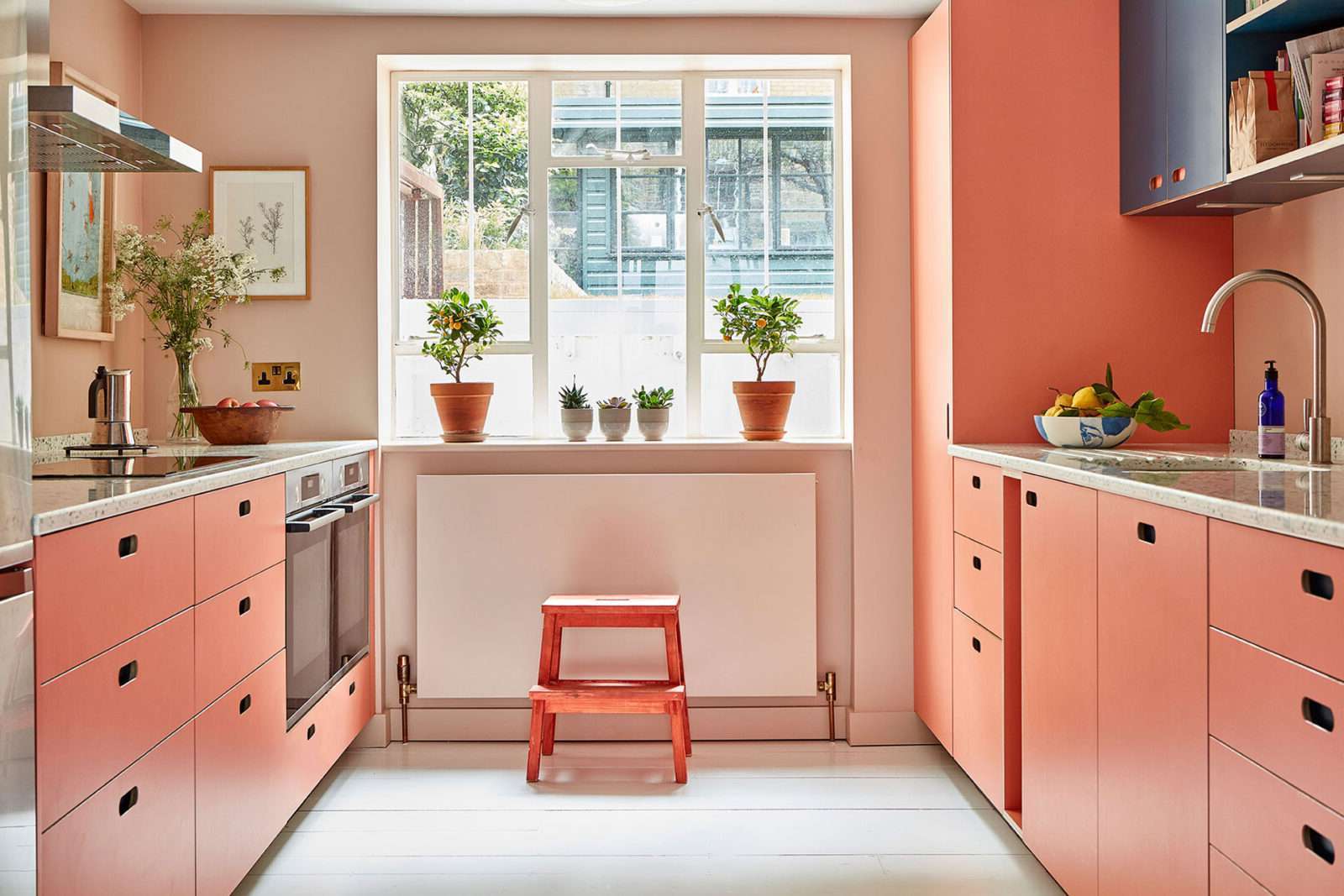
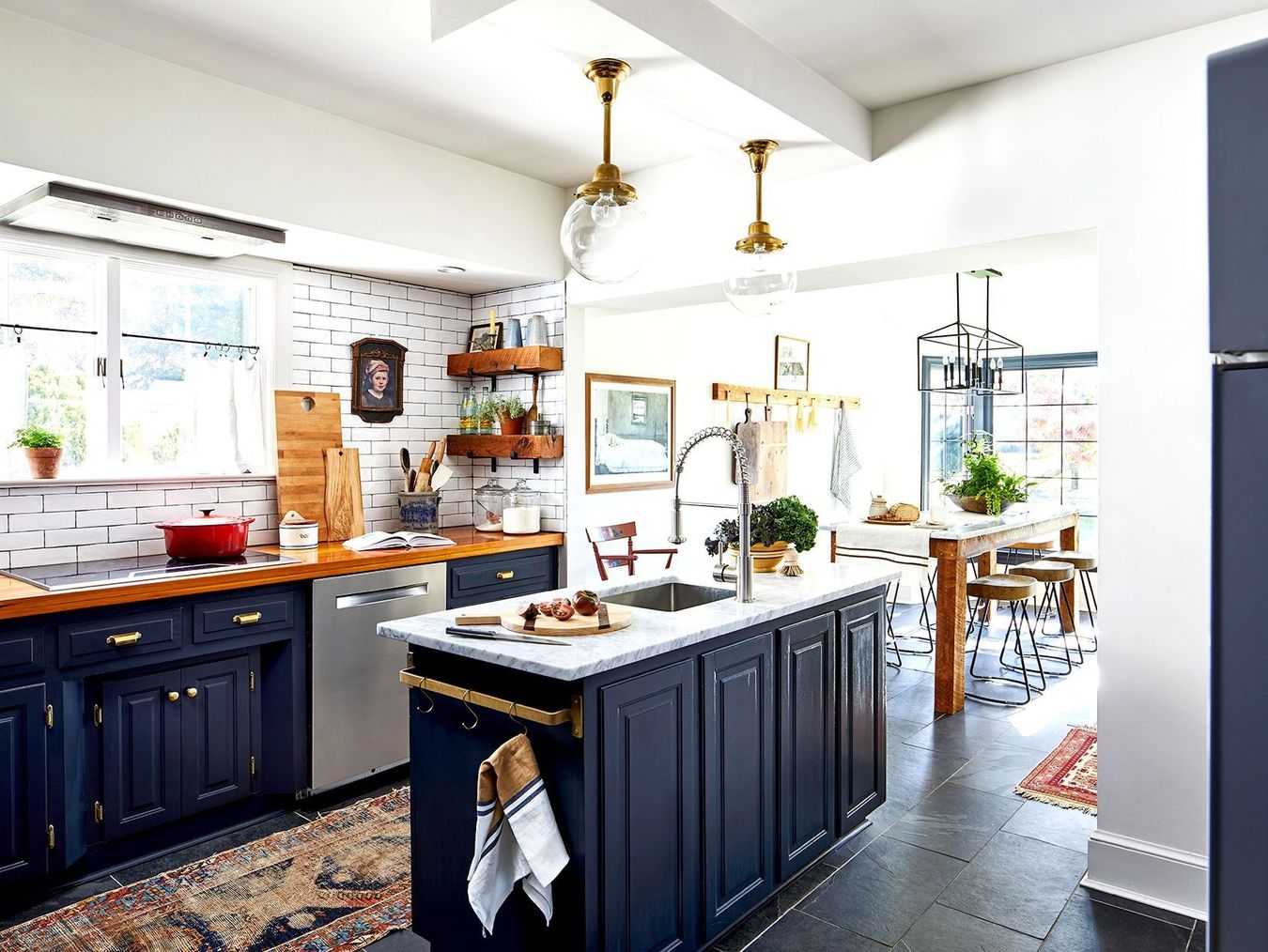
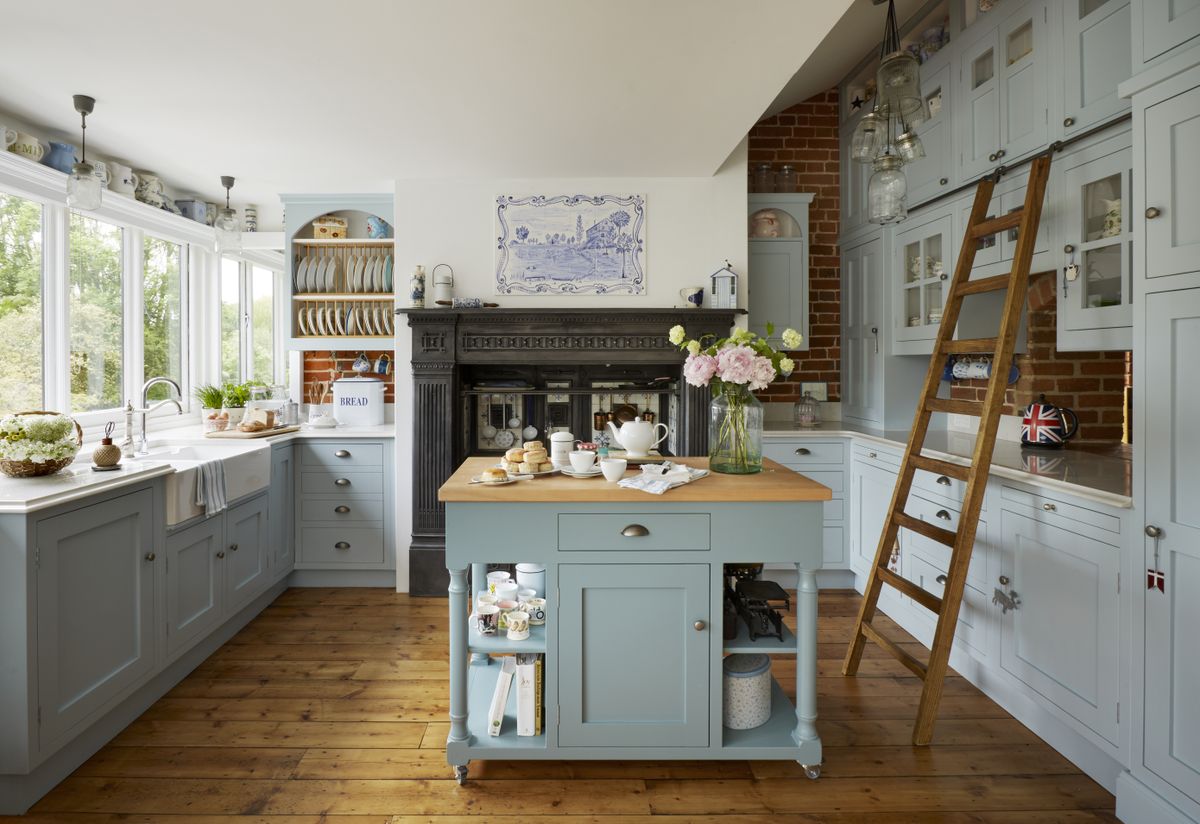
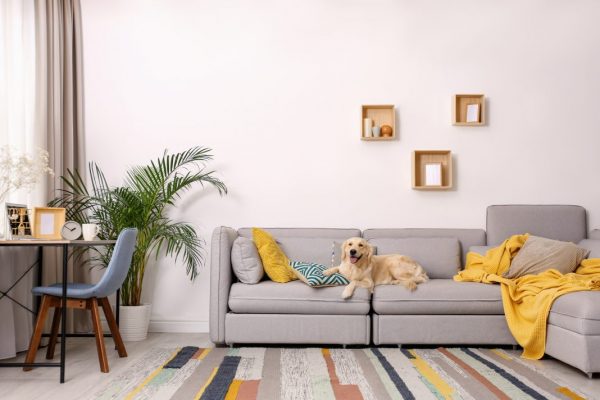
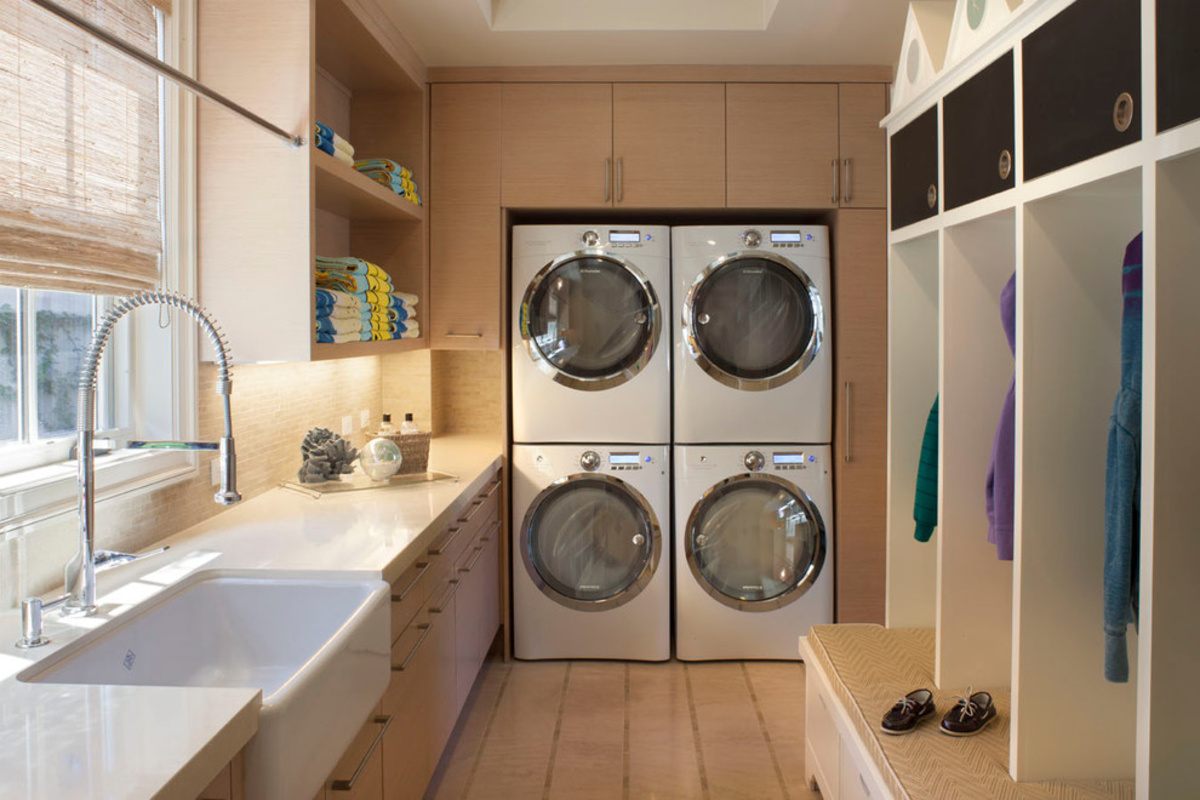
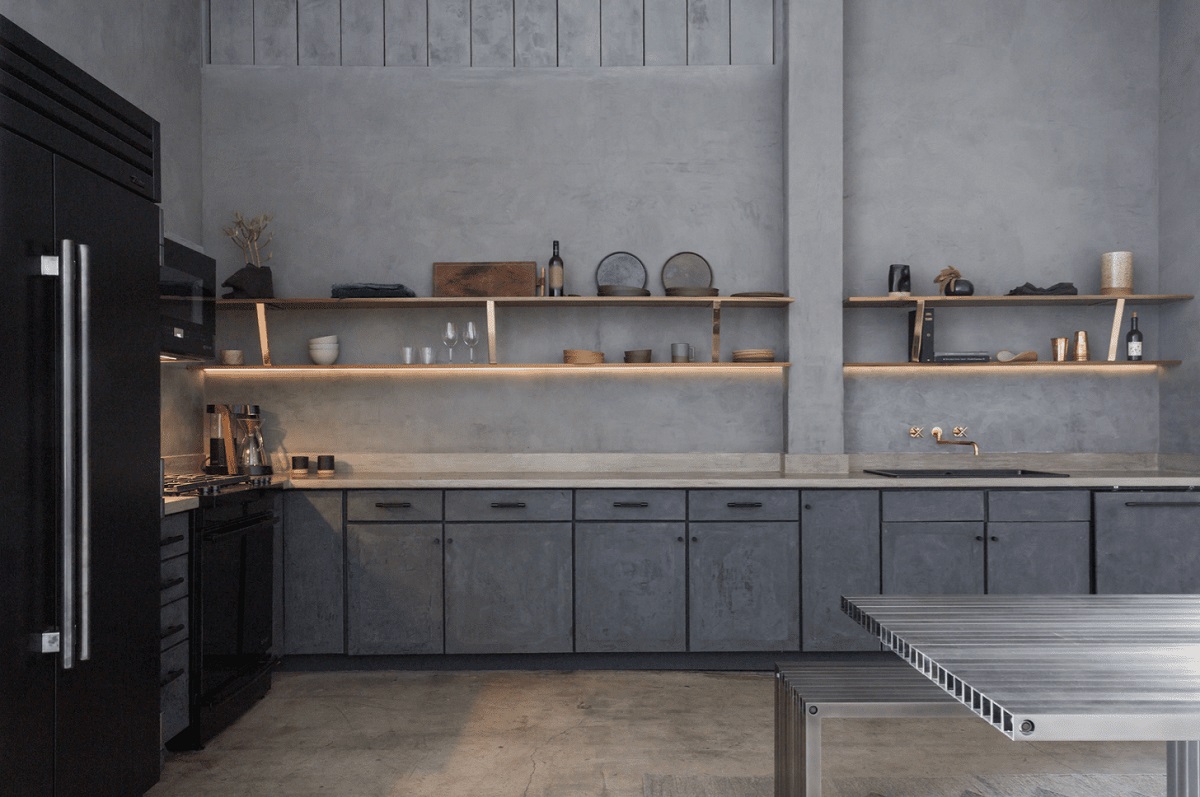
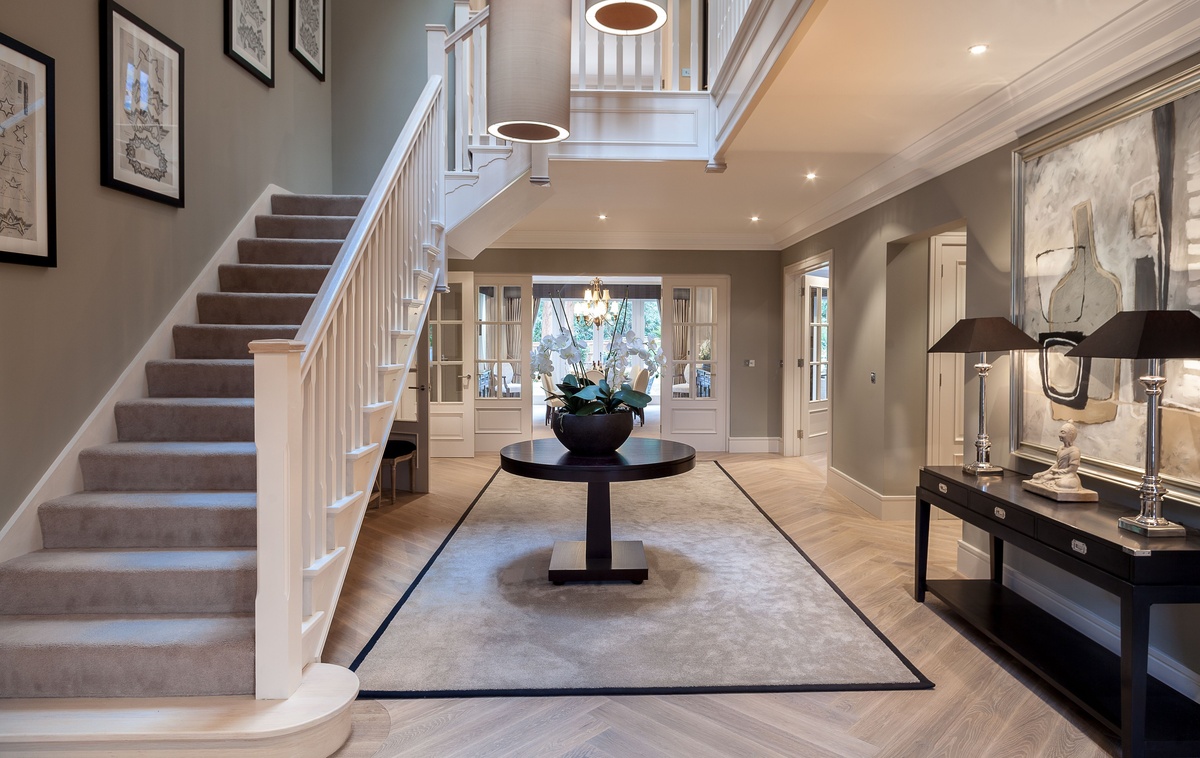
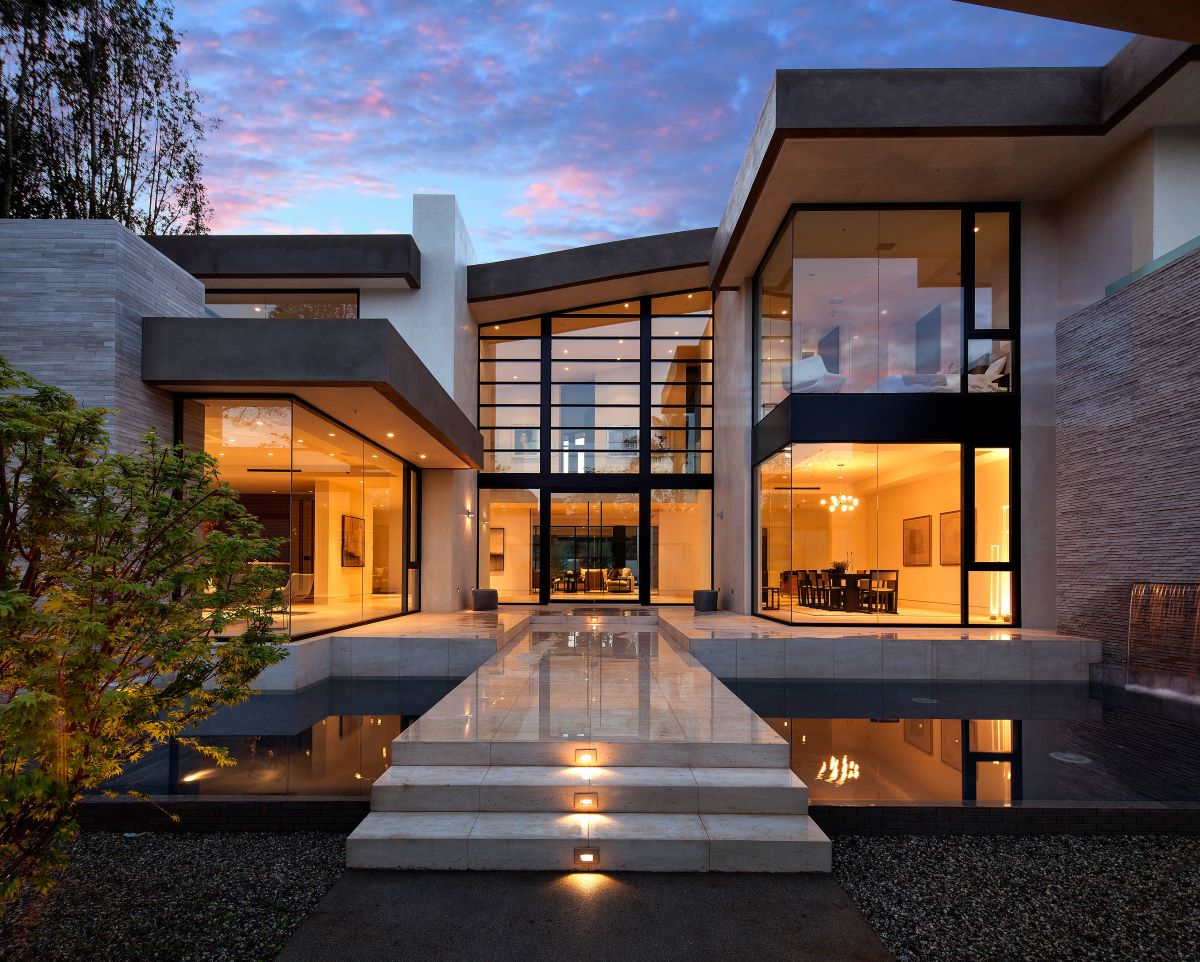
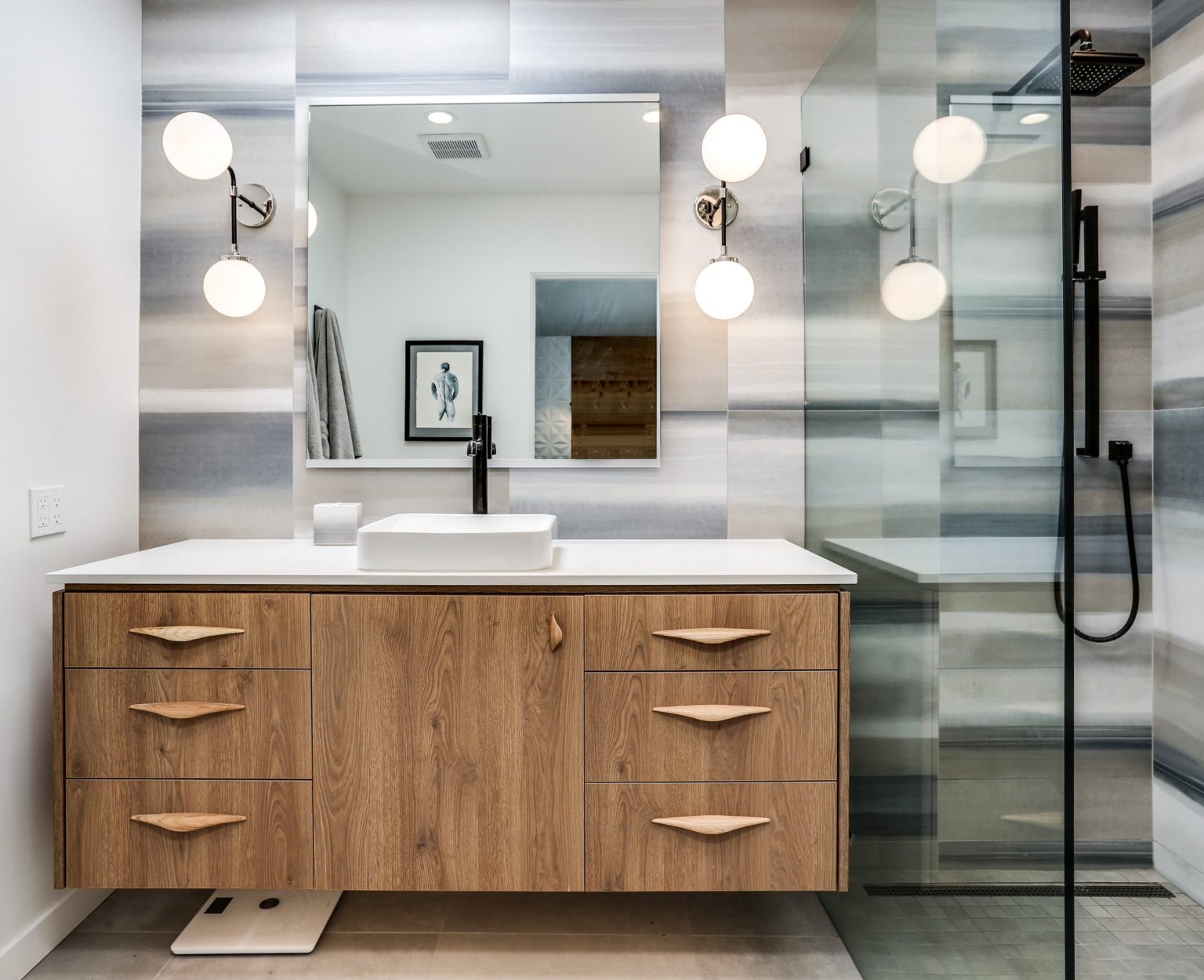
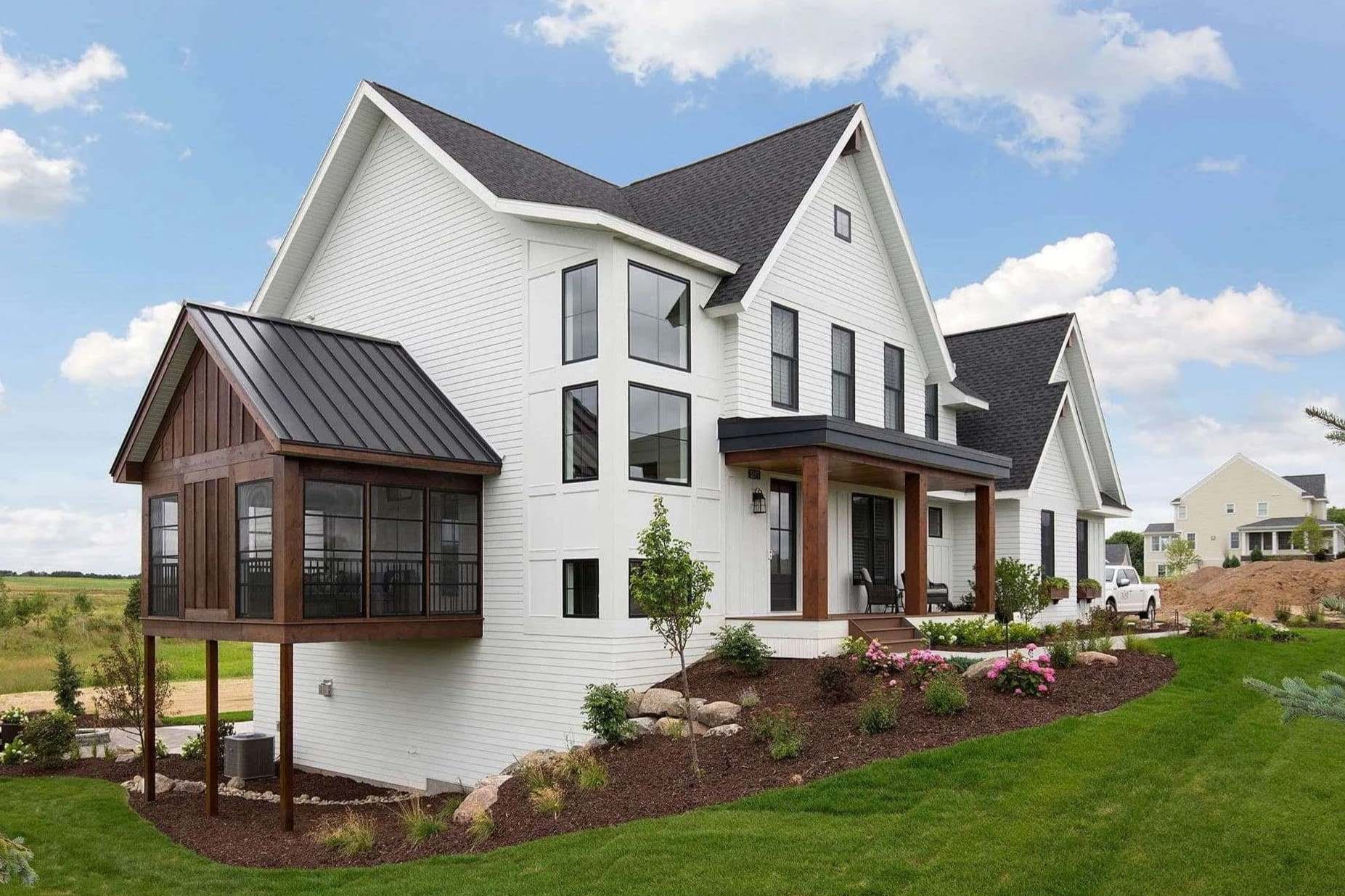
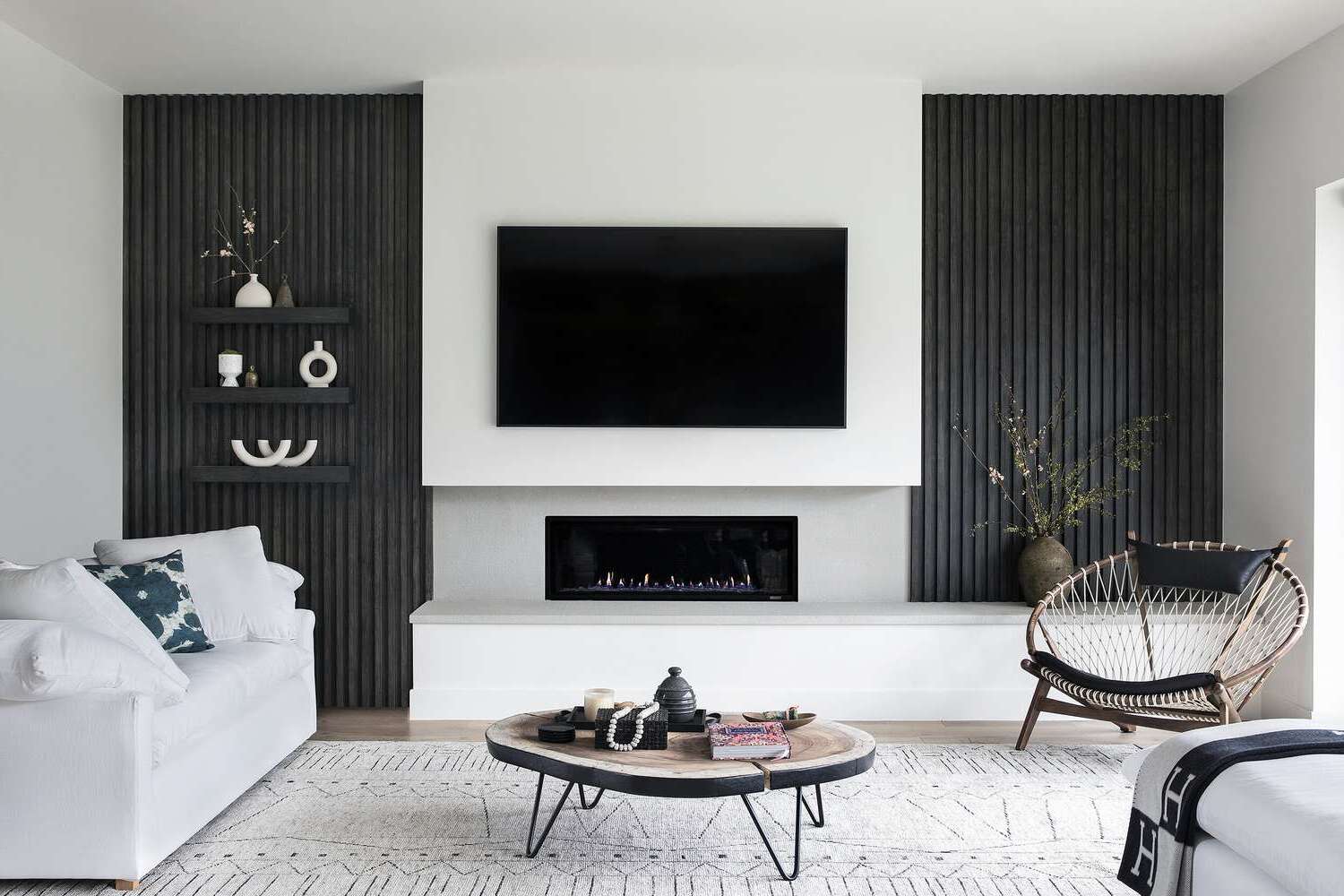

0 thoughts on “Modern Kitchen Ideas: 35 Contemporary Designs For A Kitchen”